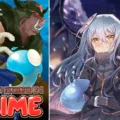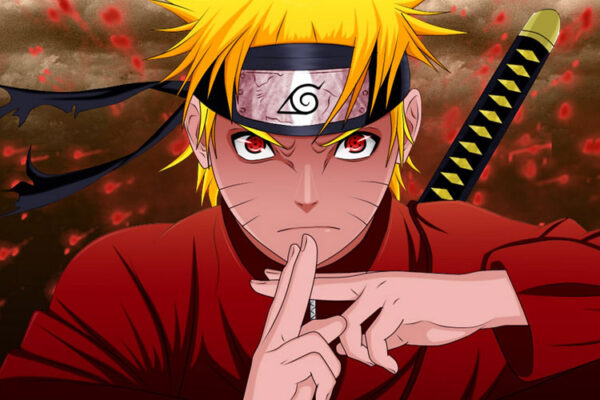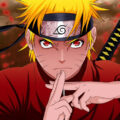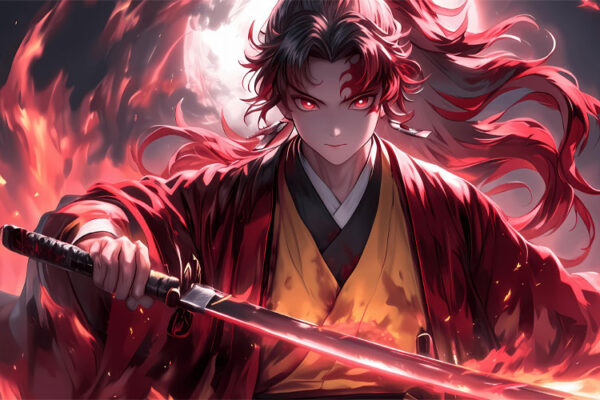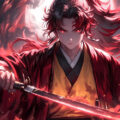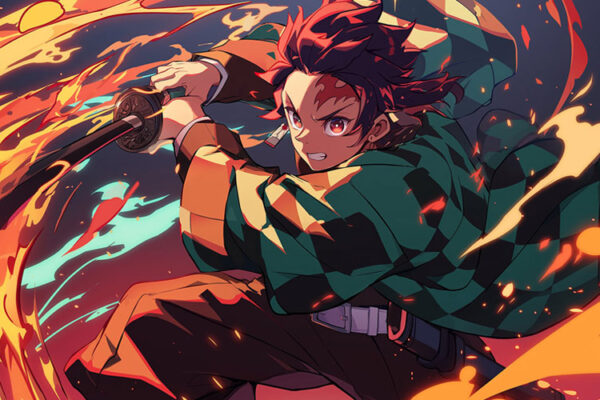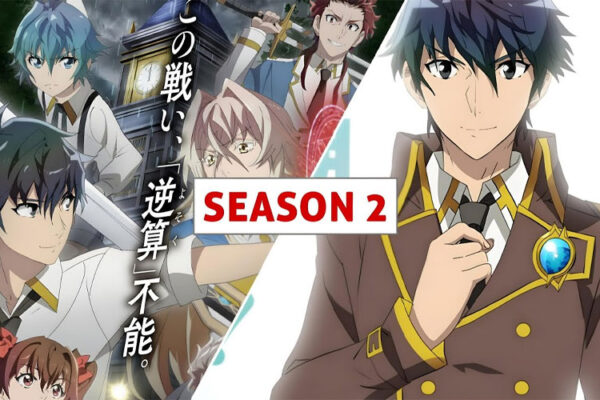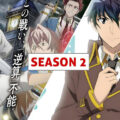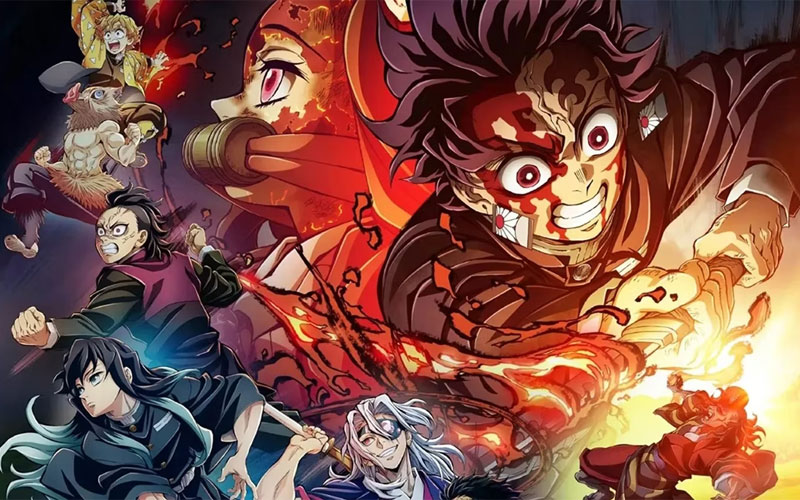
| Character | Abilities | Role |
| Tanjiro Kamado | Water Breathing, Hinokami Kagura | Protagonist, Demon Slayer |
| Nezuko Kamado | Demon powers, Blood Demon Art | Tanjiro’s demon sister |
| Zenitsu Agatsuma | Thunder Breathing | Travel companion, Demon Slayer |
| Inosuke Hashibira | Beast Breathing | Travel companion, Demon Slayer |
| Giyu Tomioka | Water Breathing | Water Hashira |
| Shinobu Kocho | Insect Breathing, Poison Techniques | Insect Hashira |
| Kyojuro Rengoku | Flame Breathing | Flame Hashira, mentor |
| Muzan Kibutsuji | Shape-shifting, Immortality | The main antagonist, Demon King |
| Akaza | Martial arts, Regeneration | Upper Moon Three, Twelve Kizuki |
| Kanao Tsuyuri | Flower Breathing, Enhanced Sight | Supporting character, Demon Slayer |
Main Characters
Demon Slayer: Kimetsu no Yaiba is driven by its compelling cast of characters. Tanjiro Kamado, the protagonist whose story is shaped by his family’s tragic demise at the hands of demons, is at the heart of the series. His journey is about becoming stronger and saving his sister, Nezuko, who has turned into a demon.
Tanjiro Kamado
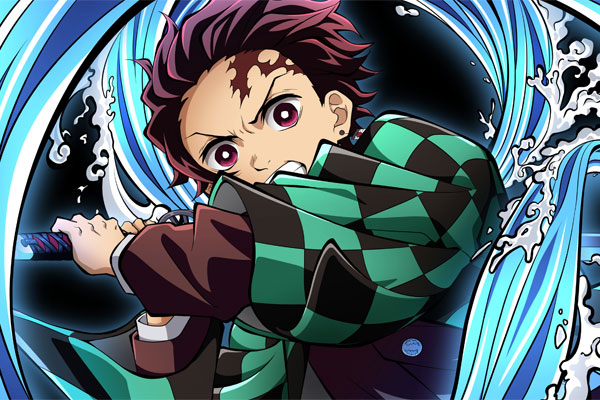
He is known for his kindness, unwavering determination, and resilience. He doesn’t simply fight demons; he seeks to understand them. His approach is unique, as he shows empathy even towards his enemies, understanding that they, too, were once human. Tanjiro’s journey is one of transformation—both in physical power and emotional strength.
Nezuko Kamado
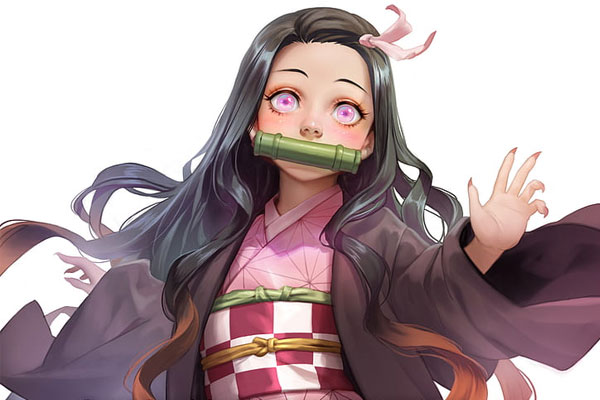
Nezuko Kamado’s sister is central to the plot. Despite becoming a demon, she retains a sense of humanity and refuses to harm innocent people. Her ability to shrink into a child-like form and her unbreakable bond with her brother are key to her character. Together, the siblings represent hope and redemption.
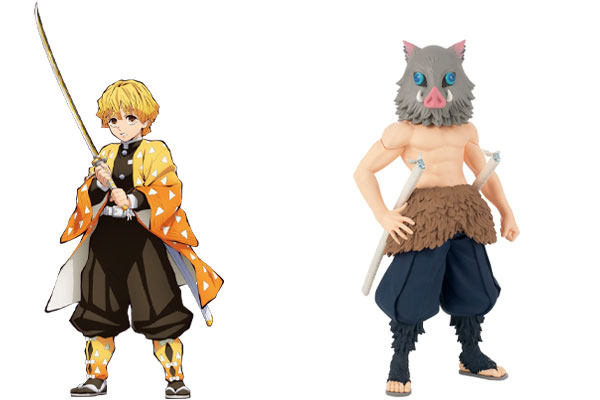
Two memorable companions support them: Zenitsu Agatsuma and Inosuke Hashibira. Zenitsu, while cowardly, transforms into a fierce warrior when unconscious, using his Thunder Breathing technique. On the other hand, Inosuke, raised by boars, is aggressive and wild, often charging into battle recklessly. His Beast Breathing technique reflects his raw, animalistic nature.
Each of these main characters adds depth to the series, offering a range of personalities and abilities that keep the story engaging and unpredictable.
The Hashira (Pillars)
The Hashira, also known as the Pillars, represent the pinnacle of strength in the Demon Slayer Corps. They are the elite warriors who dedicate their lives to protecting humanity from the constant threat of demons. Each Hashira has a unique breathing technique, making them nearly unstoppable in battle. Their skills set them apart as the most feared and respected demon slayers in the series.
Giyu Tomioka
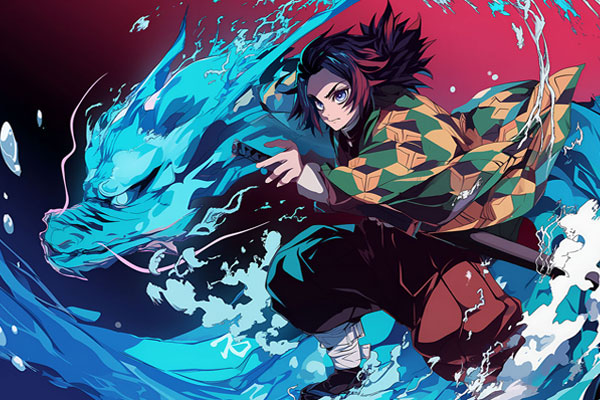
He is the Water Hashira, and he’s one of the first to encounter Tanjiro and Nezuko. Gifu is calm, reserved, and highly skilled in water-breathing techniques. His quiet nature hides a deep sense of responsibility. He was instrumental in Tanjiro’s journey, as he chose to spare Nezuko’s life despite her being a demon. This decision set the tone for the series, showcasing that not all demons are inherently evil.
Shinobu Kocho
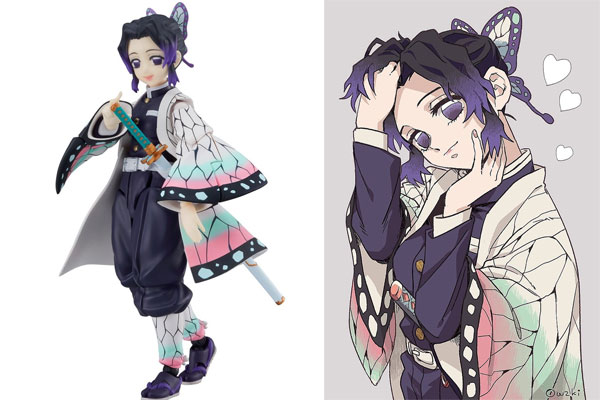
The Insect Hashira contrasts Giyu with her bubbly personality. However, she is just as deadly, utilizing poison-based techniques that incapacitate demons. Though she may seem cheerful, Shinobu carries the weight of losing her sister to demons, driving her desire to defeat them without mercy. Her agility and intelligence make her one of the most fearsome members of the Corps.
Kyojuro Rengoku
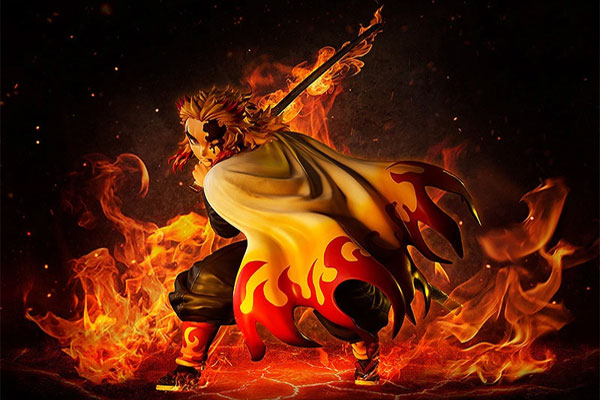
The Flame Hashira is known for his passion and optimism. His Flame Breathing is powerful, and his unwavering resolve to protect the innocent makes him a beloved character. Rengoku’s selflessness is on full display during the Mugen Train Arc, where he fights to the end to protect everyone onboard, solidifying his legacy as one of the most iconic Hashira.
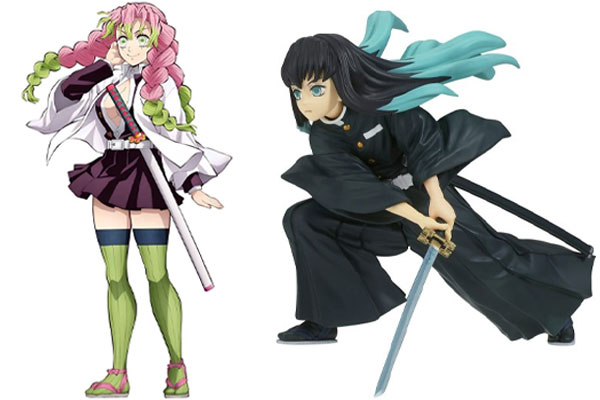
Other members of the Hashira, such as Mitsuri Kanroji (Love Hashira) and Muichiro Tokito (Mist Hashira), each have their unique techniques and personalities, contributing to the diversity of the Corps. They all share a singular goal: the complete eradication of demons.
Supporting Characters
While the main characters and Hashira drive the central narrative, Demon Slayer is enriched by its diverse supporting cast. These characters may not always take center stage, but their roles are essential in progressing the story and providing aid to the protagonists when needed.
Kanao Tsuyuri
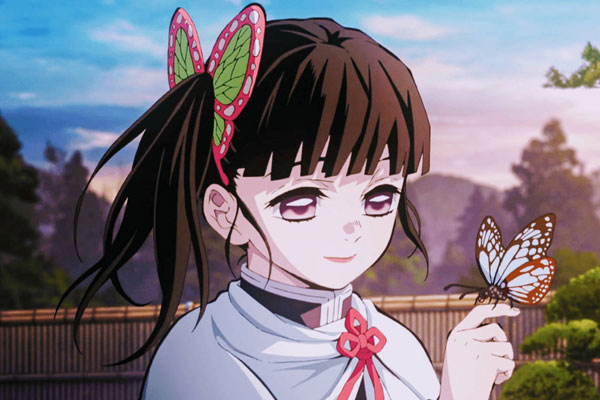
She is a notable supporting character who grows alongside Tanjiro and his companions. Trained by the Kocho sisters, Kanao is a master of Flower Breathing. However, her character development is marked by her internal struggles. Raised in an abusive environment, she relies on a coin flip to make decisions, having learned to suppress her emotions. Over time, Tanjiro helps her trust her instincts, which is a significant turning point in her arc. Her quiet strength and resolve make her a crucial ally in the battle against demons.
Genya Shinazugawa
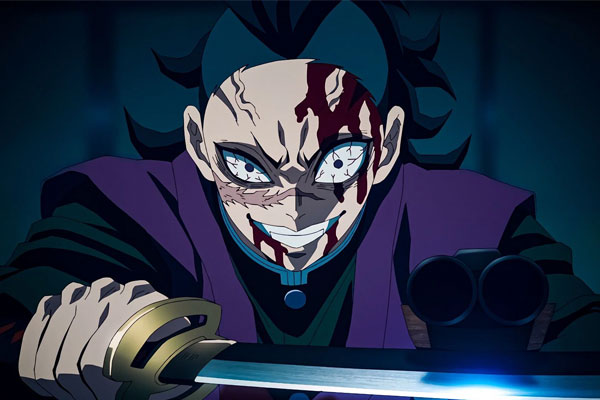
Another key figure is unlike any other Demon Slayer. He cannot use traditional breathing techniques but compensates by consuming demons to gain their powers temporarily. This unique ability sets him apart, making him both a wildcard and an invaluable asset to the Demon Slayer Corps. His complex relationship with his brother, Sanemi, the Wind Hashira, adds emotional depth to his character, especially in the Swordsmith Village arc.
In addition to these figures, characters like Aoi Kanzaki and the Butterfly Mansion team provide crucial support off the battlefield. Although not an active fighter, Aoi plays a significant role in healing injured Demon Slayers and maintaining the team’s morale. Along with servants like Sumi Nakahara, Kiyo Terauchi, and Naho Takada, they ensure that the Demon Slayers have a place of refuge after intense battles.
These supporting characters enrich the world of Demon Slayer by showing that even those who aren’t on the frontlines are vital to the war against demons.
Demons of the Series
In Demon Slayer, demons serve as the primary antagonists, and each one presents unique challenges to the Demon Slayer Corps. These demons, created and controlled by Muzan Kibutsuji, exhibit terrifying abilities and terrifyingly cruel behavior. Their power is categorized based on rank, with the most formidable belonging to the Twelve Kizuki (the Twelve Demon Moons).
Muzan Kibutsuji
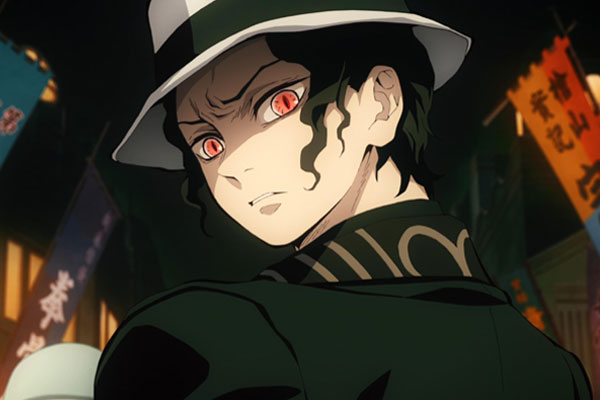
He is the Demon King and the origin of all demons. His immortality, shape-shifting abilities, and manipulation skills make him an unparalleled threat. Muzan’s cruelty is evident throughout the series, as he seeks to eliminate anything that stands in his way, including the Demon Slayer Corps. His ultimate goal is to conquer the sun, which is the only thing that can kill him. Muzan’s character is the embodiment of evil, and his influence over the demon ranks keeps the Demon Slayer Corps on edge at all times.
The Twelve Kizuki are divided into Upper and Lower Moons. The Upper Moons are more powerful and far more dangerous. Among the most notorious is Akaza, Upper-Rank Three, known for his immense strength and martial arts combat style. His brutal battle against Rengoku in the Mugen Train arc leaves a lasting impact on the series. Another prominent member is Doma, Upper-Rank Two, who is both charismatic and sadistic, leading a cult dedicated to worshipping him. Finally, Kokushibo, Upper-Rank One, stands as the strongest of the Twelve Kizuki, having been a former Demon Slayer himself. His mastery of both swordsmanship and demon abilities makes him one of the most fearsome foes in the series.
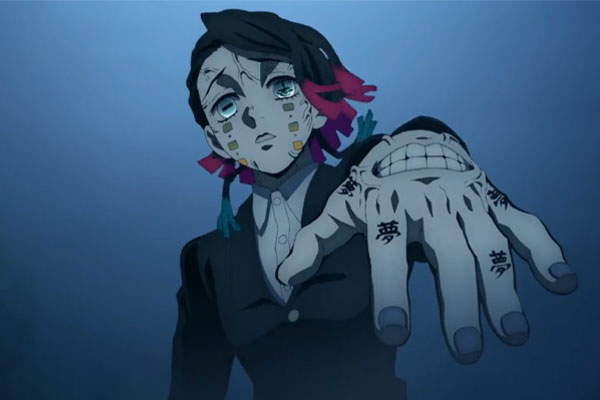
Lower-ranked demons, though less powerful than the Upper Moons, still pose significant threats. Characters such as Enmu, the primary antagonist in the Mugen Train arc, showcase the danger even lower-ranked demons can present when underestimated.
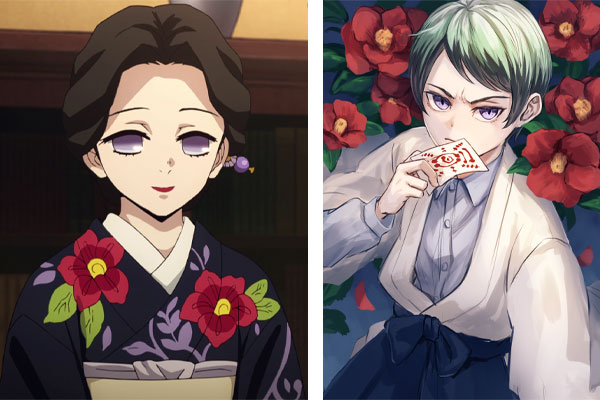
Beyond the Twelve Kizuki, other demons also play pivotal roles in the Demon Slayer series. Tamayo, a rare ally of the Demon Slayer Corps, is a demon with a conscience. Along with her assistant, Yushiro, she uses her skills as a doctor to help Tanjiro’s cause. These exceptions prove that demons are not always bound by their monstrous nature and can choose a different path.
The demons of Demon Slayer represent the darker side of humanity, where greed and a lust for power lead to moral corruption. Each demon’s unique backstory provides a glimpse into how far they have fallen, making them not just obstacles but also tragic figures in the series.
Families and Lineages
In Demon Slayer, family bonds and legacies play a crucial role in shaping the characters and their motivations. The various family lineages add emotional depth to the story, as many characters’ actions are driven by their love for or the memory of their families.
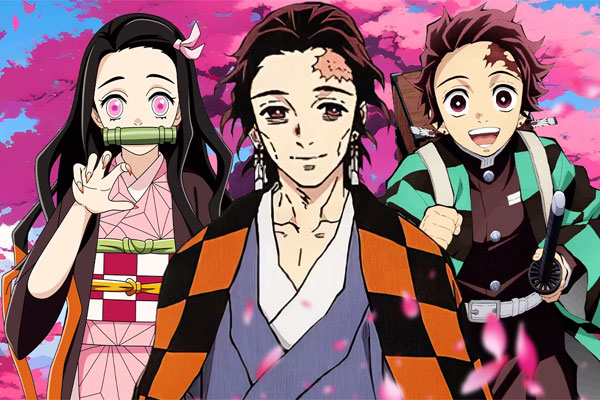
The Kamado Family is central to the entire plot. Tanjiro’s mission to become a Demon Slayer starts after his family is slaughtered by demons, leaving only his sister, Nezuko, alive but transformed into a demon. The Kamado family’s love and care for each other are apparent from the start, making their tragic end all the more heartbreaking. Tanjiro’s desire to protect Nezuko and restore her humanity becomes the driving force of his journey. Throughout the anime series, the memories of his family continue to guide him, especially his late father, Tanjuro Kamado, who taught him the Hinokami Kagura, a vital element in his battles.
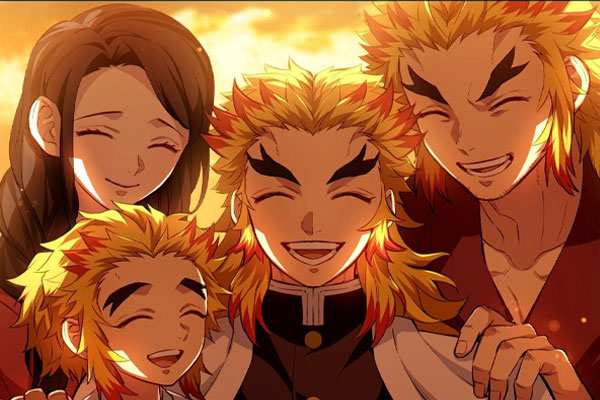
The Rengoku Family is another prominent lineage in the series, known for producing Flame Hashira. Kyojuro Rengoku, the current Flame Hashira, is a character beloved for his strength and sense of duty. His father, Shinjuro Rengoku, was also a Flame Hashira, but after his wife’s death, he became disillusioned with the Demon Slayer Corps and abandoned his role. Despite his father’s bitterness, Kyojuro’s resolve never wavers, and his sacrifice during the Mugen Train arc highlights his unwavering commitment to his family’s legacy. His younger brother, Senjuro Rengoku, also inherits the family’s honorable nature, although he does not pursue the path of a Demon Slayer.
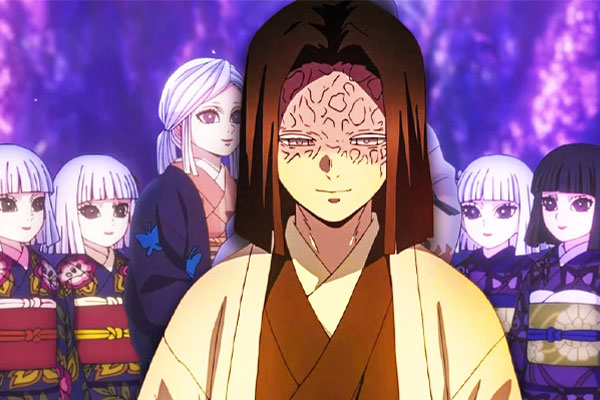
The Ubuyashiki Family leads the Demon Slayer Corps, having done so for generations. Kagaya Ubuyashiki, the current leader, is a kind and wise figure who is deeply respected by the Corps members. His family is cursed, as they are distant relatives of Muzan Kibutsuji, and as a result, they suffer from a hereditary illness that leads to early death. Despite this, Kagaya’s leadership is instrumental in uniting the Corps and devising strategies against Muzan. His calm demeanor and strategic mind make him a key figure in the fight against demons. His family’s sacrifice plays a pivotal role in weakening Muzan during the final battle.
These families are more than just background elements; they shape the decisions and motivations of the characters, adding layers of emotion and personal stakes to the story.
Demon Slayer: Kimetsu no Yaiba Swordsmith Village Arc Episode 5 is on @adultswim #Toonami tonight at 12:30 AM!
📺 Episode 5 : "Bright Red Sword" pic.twitter.com/lYuWub1k9e
— Demon Slayer: Kimetsu no Yaiba (English) (@DemonSlayerUSA) September 8, 2024
Minor Characters
While not all characters in Demon Slayer hold prominent roles, many minor characters contribute significantly to the series’ narrative and the larger Demon Slayer Corps. These figures may not see much action, but their presence supports the main cast in various ways, whether through moral support, healing, or playing essential parts in critical moments.
Murata
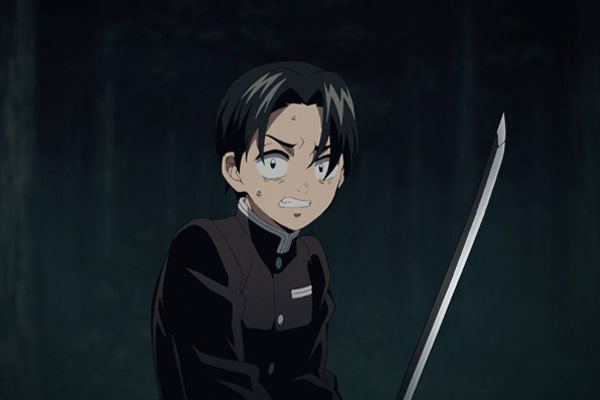
He is one such character, a member of the Demon Slayer Corps who plays a minor yet memorable role during the Natagumo Mountain Arc. Although he does not have the same skill level as Hashira or the protagonists, his courage and dedication to the cause make him a character that resonates with the theme of self-sacrifice for the greater good.
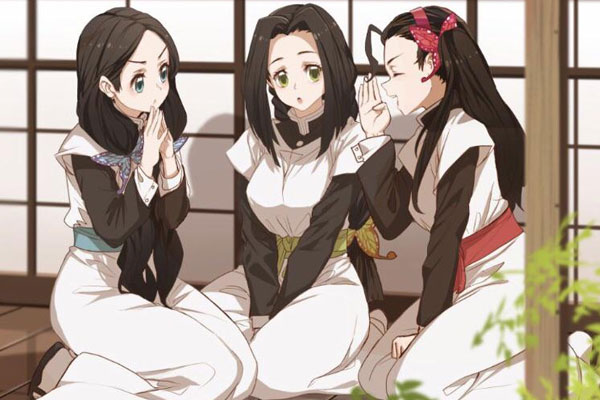
The Butterfly Mansion characters, Aoi Kanzaki, Sumi Nakahara, Kiyo Terauchi, and Naho Takada, also play a vital role in the story’s progression. These characters work behind the scenes, tending to injured Demon Slayers and helping them recover from their injuries after battles. While they may not be on the battlefield, their efforts ensure that the core fighters can continue their missions. Aoi Kanzaki, in particular, stands out as she supports the Demon Slayer Corps in various medical and logistical capacities despite her initial reluctance to fight.
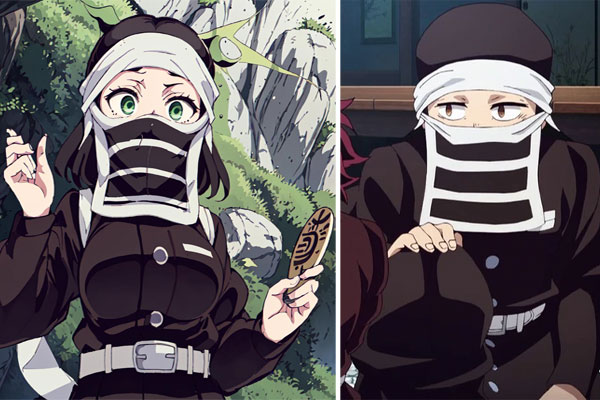
Other minor but significant characters include the Kakushi, a group responsible for cleaning up after battles and assisting in the aftermath. Goto, one of the Kakushi members, helps recover Tanjiro, Inosuke, and Zenitsu after the intense battles, ensuring that the heroes are safe after facing near-fatal encounters.
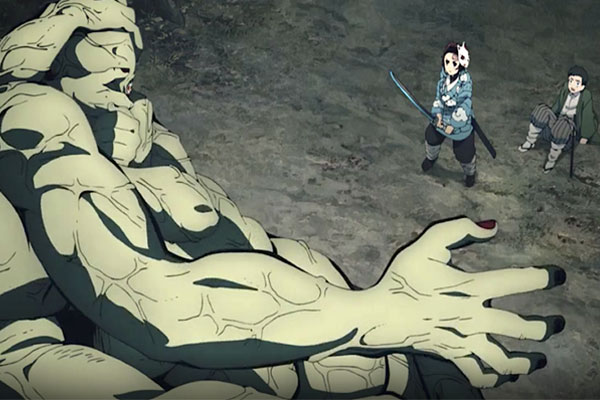
Even minor demons, like the Hand Demon from the Final Selection Arc, play key roles. These demons serve as early antagonists but leave lasting impressions due to their ruthless nature and the challenges they present to new Demon Slayers.
Despite their limited screen time, these characters play essential roles in creating a well-rounded narrative, adding to the depth and development of the series’ overarching storyline.
Frequently Asked Questions (FAQ)
Q1: Who is the most powerful character in Demon Slayer?
When it comes to raw power, Muzan Kibutsuji, the Demon King, is undoubtedly the strongest character in the series. He is the progenitor of all demons and possesses incredible abilities, such as immortality, shape-shifting, and an unparalleled healing factor. His ultimate goal is to eliminate all threats to his existence and become immune to sunlight, which is his only weakness.
However, if we consider Demon Slayers, Yoriichi Tsugikuni, who lived centuries before the events of the series, was the most powerful slayer. He created the Sun Breathing technique, the most potent form of breathing, which is the basis for all other breathing styles. His unmatched skill even drove Muzan to fear him deeply.
Q2: What are Breathing Techniques in Demon Slayer?
Breathing Techniques are a crucial part of a Demon Slayer’s arsenal. These techniques enhance a slayer’s physical abilities, allowing them to fight demons on equal footing. Each style is based on nature and reflects the user’s personality and fighting style.
Some of the most notable styles include:
- Water Breathing, used by Tanjiro and Giyu Tomioka, focuses on fluid, continuous attacks.
- Thunder Breathing, utilized by Zenitsu, allows for lightning-fast strikes.
- Flame Breathing, used by Kyojuro Rengoku, features powerful, explosive movements.
These techniques are not just physical; they involve precise breathing patterns that improve battle strength, speed, and focus.
Q3: What is the significance of the Twelve Kizuki?
The Twelve Kizuki, also known as the Twelve Demon Moons, are Muzan Kibutsuji’s most powerful demon subordinates. They are divided into Upper Moons and Lower Moons, with the Upper Moons being far stronger. Each member holds a rank, determined by their power and abilities, with Kokushibo as Upper Rank One being the most powerful after Muzan.
The Twelve Kizuki play a vital role in the series, as their defeat is necessary for the Demon Slayer Corps to reach Muzan eventually. Each member of the Upper Moons is a serious threat to even the strongest of the Hashira.
Wrapping Up
In Demon Slayer-Kimetsu no Yaiba, each character plays a pivotal role in driving the story forward, from Tanjiro Kamado’s unwavering determination to save his sister to the immense power of the Hashira and the demons they face. The Hashira embody the pinnacle of strength, while the Twelve Kizuki demons, led by Muzan Kibutsuji, pose an ever-present threat. Supporting characters, including members of the Butterfly Mansion, provide the backbone that allows the Demon Slayer Corps to thrive. Family legacies, such as the Kamado and Rengoku families, add emotional depth and motivation to many of the central figures. Ultimately, Demon Slayer is about resilience, sacrifice, and the strong bonds that fuel the battle between good and evil. Each character contributes uniquely, making the series a standout with its complex and engaging cast.



